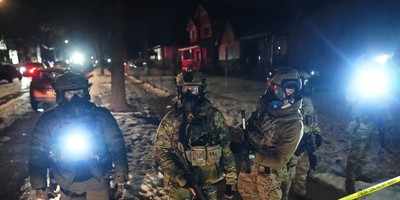Learning cross the street safely is one of the first things a child is taught after it learns to walk. The first lesson: Cross at the cross walk. Second, only cross when the light is green. And, the cardinal rule -- always look both ways before crossing.
The financial markets made folly of these rules of thumb over the past three years, transforming once seasoned street-crossers into mere toddlers overnight. People withdrew their investments from the roiling equity markets and sought safe havens in cash. Mattresses replaced major financial institutions as the most trusted stewards of national wealth.
Pedestrian investors came to no longer believe in the safety signals. After all, they had lost money on home mortgages that, up until 2008, were considered among the world’s safest investments. Almost all the economic models showed that housing values would never decline. But decline they did. For those who lost their investments, it was like getting hit when the light was green. A few of the more cautious investors even looked both ways and foresaw the bursting mortgage bubble. They wisely moved into other investments, believing that the crisis would be contained within the housing industry. They were wrong. The mess spilled into the overall economy, causing a global financial meltdown. The goody-two shoes got hit too.
Those that managed to survive limped to the curb where they stayed put for two years. The merest movement startled them. With a look of betrayal in their eyes they looked up at their parents – the media pundits and the Federal Government -- for answers. They instinctively reached for a comforting hand – placing their precious eggs in the Federal Government’s nest. 2008 witnessed record purchases of U.S. Treasuries by foreign and domestic investors looking for a safe place to ride out the storm.
Recommended
The rush to safe haven started out as a reflexive, instinct-driven stampede, but quickly turned existential. Fear became the new normal. The question turned from ‘when is it really safe to cross the road,’ to ‘why would a chicken ever cross the road in the first place?’ People were so concerned about preserving what little capital they had left that they lost all concern for how to grow their wealth. Not losing became the new winning.
But the hole was so deep that the government feared a downward economic spiral if it did not enable the worst drivers – those that in fact caused the crash – the nation’s financial institutions. The mantra ‘too big to fail’ echoed with mind-numbing repetition throughout the halls of government. Ultimately the politicians heeded the call, propping up the banks with the largest bailouts in history. The Government took most of the bad assets of the private firms’ book and converted them into a public debt. After the bailouts, it was expected that the private financial institutions would be freed up to lend money to distressed individuals and businesses and get the economy rolling again.
But that didn’t happen. As time has revealed, instead of using Government largess to help troubled consumers and small businesses, the banks hoarded the cash, and compensated themselves handsomely. In fact, in 2009, less than a year after the government bailed them out, Wall Street rewarded itself with almost $144 billion, the largest compensation package in its history. Moreover, the firms still held plenty of toxic mortgages on their books. And to add insult to injury – they had lied about just needing to bail out their clients. After the dust settled it came to light that Goldman Sachs, one of the supposedly least affected banks – and one of the most arrogantly opposed to government regulation – received almost $3 billion in government funds to bail out its own losing trades.
Needless to say, investors were not impressed. They clung to the sidelines. There were, to borrow a term from the estimable Donald Rumsfeld, too many ‘unknown unknowns’ out in the street. Meanwhile, the government’s borrowing spree diluted the value of the dollar so much that yields on short term treasuries trailed nominal inflation. Even while hugging the curb investors were getting side-swiped. The second round of Government debt issuance, QE 2, lowered returns on ‘safe money’ further and forced shell-shocked investors back into the street. As a result, the stock market rallied in the last months of 2010 and early 20011.
Many pundits celebrated the stock market rally as a sign of the return of consumer confidence. This was far from the case. The big ‘dumb’ money (as many Wall Street traders glibly refer to it) – institutional investors such as state pension funds and private insurance pools – could not survive on the near zero interest rates they earned on public debt, and were forced back into the street. Their actuarial models, the means by which they paid claims, assumed risk-adjusted returns averaging between 5-8%. They were now earning less than 2%. Not only had they lost upwards of 40% of their capital in the downturn, but the anemic, jobless recovery combined with the retiring baby boom population, placed serious strains on their resources. The risk of not crossing the street spelled certain failure, even as the unknown risks of crossing loomed.
The situation in the street is not much better (and maybe worse) than it was in 2008. The same large firms control the majority of the nation’s financial assets. Only now, thanks to mergers and government bailouts, they’re even bigger. Individuals at the helm of these firms largely escaped scrutiny, not to mention punishment, because the problem was chalked up to ‘systemic risk.’ Therefore, he same incentives that drove these firms to ignore the stop signs and run over pedestrians persist today. And one more thing – the U.S. government, supposedly the grown-up in the game, became the most risky institution in America.
When is crossing the street safer than standing on the curb? When there is no curb.

























Join the conversation as a VIP Member